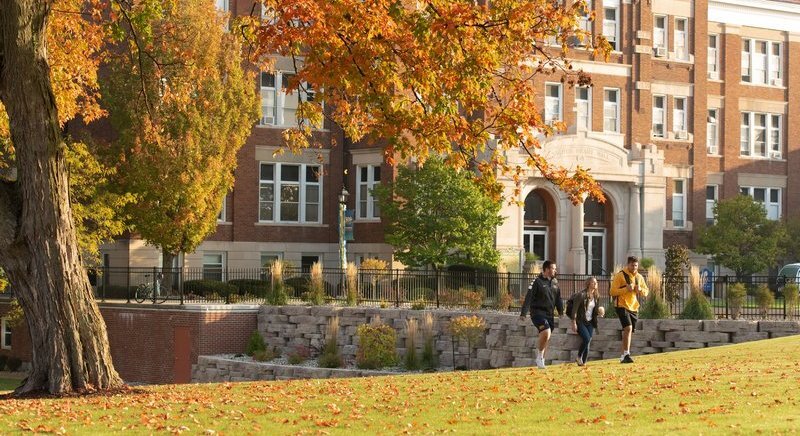At Siena Heights University, which arguably first developed the unique bachelor of applied science (BAS) degree program in 1975, the short answer is: a career advancement tool.
“The problem with the short answer is that it takes more than a short answer,” said Norm Bukwaz, a retired SHU faculty member and dean who helped develop the BAS degree more than 45 years ago. “The whole other world of the community colleges are the occupational, or Associate of Applied Science degree programs, that prepare people for a career. You’ve got all of these people completing technical degrees entering the workforce. But the programs that they took are called the non-transfer programs. We learned quickly that they had very important transfer needs.”
Bukwaz, who still serves as the BAS Program Director for SHU Global, the university’s home for its professional and graduate programs, said the best way to look at the Bachelor of Applied Science degree is that each BAS degree gives students the ability to build their education based on a qualified Associate of Applied Science program and/or specialized training in so they can complete their degree at an accelerated pace. Students will focus on coursework in non-major areas to meet BAS degree requirements.
He said the BAS degree has met that need. It was designed for practicing professionals in four major degree tracks:
- Public Safety Professions
- Health Care Professions
- Specialized Occupational Professions
- Technical Trade & Industrial Professions
Bachelor of Applied Science vs Bachelor of Science Degree
So, what are the differences between a Bachelor of Applied Science and a Bachelor of Science degree?
According to Bukwaz, the more recognized Bachelor of Science degree is a more traditional path aimed at students wanting to study a traditional science field like biology, chemistry, math, etc. It also mostly relies on a four-year degree completion path, whereas the BAS degree can be completed sometimes in a year or less in as little as 10 courses.
Another distinction between the BAS and the BS is the delivery format. Many BS programs are still taught in a traditional campus classroom setting. However, although BAS courses can be taught in an in-person format, the majority of Siena Heights’ BAS courses have been taught in a completely online format delivered in seven-week sessions, which allows flexibility for working adults.
“In my research, Siena Heights was the first to develop a BAS model of delivery, to embrace the BAS degree concept, and commit to building the program and marketing it broadly through the community college AAS community,” Bukwaz said.
A recent SHU BAS student satisfaction research study cited the ease of credit transfer and earning a higher education credential as primary reasons why many students enrolled in the BAS degree program at Siena Heights.
“Our commitment to awarding credit for nontraditional, but college-level, learning and work experience is part of the total deal for BAS students,” Bukwaz said. “Packaging their rich learning and work histories with a flexible, individualized, relevant career advancement program delivered conveniently and in a quality way is the key to SHU’s success.”
Is a BAS Degree Marketable?
That same survey also reported that more than 80 percent of SHU BAS graduates indicate their degree helped them professionally. In fact, SHU BAS graduates said one of these four career outcomes occurred as a result of their finishing their BAS Degree:
- Received a promotion
- Obtained a new job at another company
- Significantly increased their earnings; or
- Made a change to a new industry/sector
The research study also said that the strongest impacts of the BAS Degree came in “Liberal Arts” outcome areas. More than 80 percent of SHU BAS graduates said their communication skills were improved and they had developed a broader perspective. Also noteworthy was that 73 percent of respondents indicated the BAS program had helped them with their leadership and management skills.
An Online Degree Based on Work Experience
SHU Global’s Bachelor of Applied Science program also has the flexibility of transfer-friendly policies like credit for work and life experience.
“Our commitment to broadening the intellectual horizons of technical and occupational professionals who have primarily had heavy doses of technical learning is great for employers and these students,” Bukwaz said. “The vast majority of our BAS students report they don’t need more major-related, technical training. They need someone to package their rich history of college-level learning into an achievable bachelor’s degree individualized to their needs. They need the broadening we can provide as well as additional skill sets like management and leadership.”
Siena Heights has graduated more than 8,500 students with BAS degrees since the degree’s inception more than 45 years ago.
“So, approximately one out of every two Siena Heights graduates with a bachelor’s degree has graduated with a BAS degree,” Bukwaz said. “No school can match SHU with its story of BAS graduates, its partnering relationships with such a wide range of AAS, hospital-based and technical providers, and can articulate a BAS story as we have.”
To learn about SHU Global’s distinctive online Bachelor of Applied Science degree program, visit start.sienaheights.edu.


